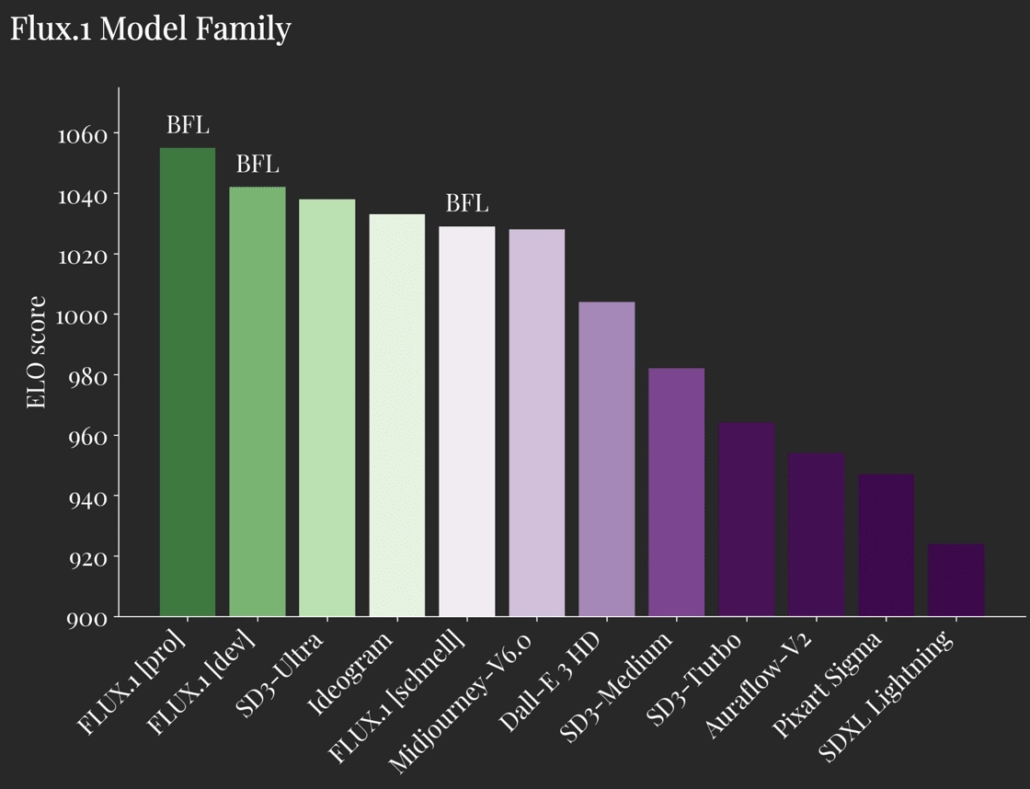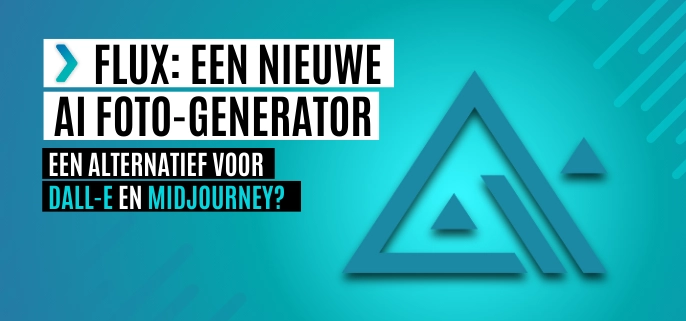Is newcomer Flux an alternative to Midjourney or DALL-E?
We are getting more and more opportunities to create images with AI. Earlier this month we added Flux, developed by Black Forest Labs that raised $31 million during an investment round.
What is Flux and how does it work?
Flux focuses on speed and efficiency, generating images in real-time. This allows users to experiment immediately with different styles and concepts. The speed at which Flux works is one of the key features that sets it apart from other AI photo generators on the market. Users can create a visual within seconds, which is a huge advantage in creative processes where speed can be an important factor.
Control and flexibility with Flux
Flux also offers a wide range of options for control and flexibility in image editing. The interface is user-friendly and accessible, making it an attractive tool for both beginners and advanced users. In addition, it is possible to further edit and customize the generated images, which is a big plus for those still eager to make adjustments to their design.
Flux versus Midjourney and DALL-E: A comparison
Flux competes with established players such as Midjourney and DALL-E and claims it is already better in the following areas:
Visual quality
The sharpness, level of detail, color saturation and overall aesthetics of the generated images. Flux uses advanced algorithms that ensure higher precision and a more realistic end result.
Prompt-tracking
Flux excels in how well the AI is able to interpret instructions and descriptions (prompts) given by the user and translate them into an image. This means users get exactly what they envision.
Variation in size and proportion
Users can very easily generate images in different sizes and formats (e.g., square, rectangular, panorama), which is useful for various applications such as social media, websites or print.
Text in pictures
Flux stands out in particular for its ability to properly incorporate text into images. Where other AIs struggle to integrate readable and aesthetically pleasing text, Flux succeeds.
Diversity in output
Flux is capable of generating different types of images, varying in style, subject matter and complexity. This makes it a versatile tool for both artistic and commercial applications.
The different versions of Flux
Flux offers three different versions, each with its own unique advantages:
- Pro: The top model that offers the best results in terms of image quality and functionality. Ideal for professionals looking for the best of the best.
- Dev: The mid-range device that offers a balance between speed and quality. Suitable for users who value both speed and good results.
- Schnell: The fastest model, but with the lowest quality. This is a good option if you need something simple quickly and do not necessarily require the highest quality.
ELO score: How does Flux perform in comparison?
Below you can see their ELO score relative to the other players. In the context of AI image generators, the ELO score is used to compare the quality and performance of different models. A higher ELO score means that the model performs better on a set of criteria.

First impressions of Flux: what do users think?
Flux still has plenty to prove, but first impressions are that the quality and ease of creating images are very good. See below an example of an image that was created within seconds.

Take a leap forward in your marketing AI transformation every week
Every Friday, we bring you the latest insights, news and real-world examples on the impact of AI in the marketing world. Whether you want to improve your marketing efficiency, increase customer engagement, sharpen your marketing strategy or digitally transform your business,'Marketing AI Friday' is your weekly guide.
Sign up for Marketing AI Friday for free.









